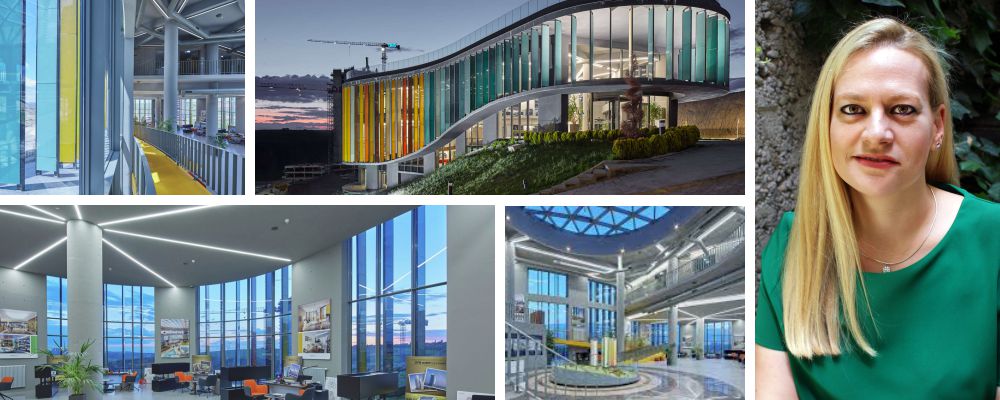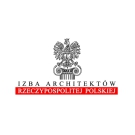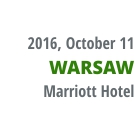Biography
POSITION
Managing Partner – Yazgan Design Architecture, Turkey

PRESENTATION
ONS INCEK Showroom & Sales Office
AWARDS
AWARDS OF THE OFFICE:
2015 ONS Incek Residences Showroom & Sales Office – World Architecture Festival 2015 – Colour Prize Winner
2015 Konya Food & Agriculture University – World Architecture Festival 2015 – Finalist
2015 ONS Incek Residences Showroom & Sales Office – World Architecture Festival 2015 – Finalist
2015 Aselsan (REHİS) Gölbaşı Campus – World Architecture Festival (WAF) 2015 – Finalist
2015 Volkswagen Arena – INSIDE World Festival of Interiors Awards 2015 – Finalist
2015 Volkswagen Arena – Arkitera Architecture Yearbook Project 2014
2015 Aselsan (REHİS) Gölbaşı Campus – Arkitera Architecture Yearbook Project 2014
2015 ONS Incek Residences Showroom & Sales Office – World Architecture Community – 18th Cycle Selected Project
2015 Tema Istanbul Showroom – European Union Prize for Contemporary Architecture Mies van der Rohe Award – Nominee
2014 ONS Incek Residences – World Architecture Festival 2014 – Finalist
2014 ONS Incek Residences – European Property Award 2014, Residential Highrise – Highly Commended
2014 Tema Istanbul Showroom Landscape – European Property Awards 2014, Commercial Landscape – Highly Commended
2014 Tema Istanbul Showroom – WAN Metal in Architecture Awards – long list
AWARDS OF THE SPEAKER:
2007 Begum Yazgan’s PhD Thesis – Middle East Technical University Best Thesis Of The Year Award
2002 50th Year Park and War Memorial Complex – National Project Competition – 5th Honorable Mention
2002 Ankara Swan Park – National Architectural Project Competition – 3rd Honorable Mentio
2015 World Architecture Festival – Colour Prize Winner
BIOGRAPHY
Begüm Yazgan was born in Ankara in 1974. She graduated from the Istanbul Technical University Department of Architecture in 1995, where she received a B. Arch degree. She worked on both national and international projects consisting of shopping centers, residences, banks, hotels, and university buildings in private architectural offices from 1995 to 1998. She received her M. Arch degree from the Middle East Technical University Department of Architecture in 1998 and worked as a research assistant in the METU Department of Architecture from 1998 to 2003. She attended the Landscape Design Studio and worked in the Revolving Fund Office of the Department. She also attended the Tokyo Institute of Technology as a doctoral researcher supported by a fellowship in 2001. As part of her research, she gave lectures and attended various courses in the university.
Begüm Yazgan obtained her PhD. Arch degree from the METU Department of Architecture in 2006. Her doctoral dissertation entitled “Post-War Systems Ecology and Environmentally-Appropriate Approaches in Architecture since 1960s” won the “Best Thesis of the Year” award in Middle East Technical University in 2007. Her thesis examines the ways in which ‘systems approach,’ which found a place in the science of ecology after the 1960s, has a profound effect in the contemporary discourse of sustainable architecture and current green architectural practices. Currently, she practices at “Yazgan Design Architecture”, which she founded with her husband Kerem Yazgan, PhD. Architect, in 2003. She considers her theoretical background and past academic career to be an integral part of her approach in her professional practices.
Artfully placed in 45,000m2 of manicured landscape, ‚ONS İNCEK’ is a luxury residential project consisting 3 colorful towers containing 992 residences. Signaling the entrance of the residential complex, the multi- leveled showroom displaying the mock-up apartments, is designed with its contours sitting parallel to the inclined topography. Located under the central atrium, the large model of the residential complex is at the focal point of the showroom. With varying modes of circulation, including ramps, stairs and elevators, the visitors are able to move with ease throughout the free space interior. The private offices are located on the top floor, while the residential complex models and sales associates are located at the ground level. At the basement level, the three fully furnished mock-ups of the apartments are displayed.
The interior of the showroom is enveloped with a numerous amount of repetitive vertical colored glass panels. With its multi-leveled, exposed concrete structure, the showroom is predominantly a medium grey color. This creates a unified background for the color of the glass panels to be more accentuated and visible from a distance. Color is also of great importance to the overall design intent of the project as a whole. Each tower facade is also wrapped with glass panels. The colors of the glass panels are the same colors used in the towers, visually connecting the showroom to the residential complex.
The three primary colors used were a turquoise blue, a warm green and deep yellow. A gradient of these colors was then created to move the eye move along the contours of the building. As the colored glass moves around the façade, the gradient moves from cool colors to warm colors and back to cool colors as the building form moves upward with the topography. The longest panels are ten meters in length, warm in color, and signify the dramatic dip in topography. The shortest panels are cool colored and help to signal the entrance to the building. With the variety of colors and lengths of the glass panels, color becomes a performance element creating visual movement around the building. This movement is not only created by the color and size of the glass panels, but the shadows that are cast. The mat colored glass panels can also be used as a signaling element. While the colored panels are muted when is shadow, they are much brighter in color when exposed to the sun. The shadows that the panels cast within the space, also signal the passage of time and the orientation of the sun.
The landscape is designed as layered ripples that descend while following the natural topography, as if originating from the central amenities complex. The design creates a large number of individual gardens containing a wide variety of plants indigenous to Ankara, Turkey.














